Discovering the Mastallone Valley: what to see among art and culture
One of the three main valleys of Valsesia, along with Valgrande(here an in-depth look at the churches in the latter valley) and Valsermenza, is the Mastallone Valley , which takes its name from the Mastallone stream, a tributary of the Sesia River that flows for about twenty-seven kilometers in northern Piedmont and specifically in the valley of the same name. Around the stream, in some places there are fine sandy beaches washed by crystal-clear emerald waters, suitable for sport fishing enthusiasts. The Mastallone Valley stretches from Varallo to the scenic Lake Baranca (reachable by a pleasant hike from Fobello), where the stream has its source, and is characterized by a varied landscape, from natural basins among the meadows to small churches surrounded by greenery, from the stone bridge (the Ponte della Gula) suspended over a chasm of about thirty-five meters above the Mastallone, which according to legend was built by the devil, to villages located on the mountainsides, to wilderness, with many paths perfect forhikers. The valley is thus an alternation of gorges and wide plateaus surrounded by fir and beech forests, picturesque alpine villages and enchanting views and vantage points of nature.
It includes the municipalities of Cravagliana, Fobello, Cervatto, Rimella and Sabbia: the former is probably the oldest village in the valley; in Fobello, nature becomes softer and the village is known for the stately villas that can be found scattered on the slopes of the mountains; Cervatto remains almost hidden on the saddle of the mountain but is one of the most evocative places in the valley nestled between forests and steep cliffs; Rimella is known for its terraces and views, as well as for being one of the oldest Walser colonies in Valsesia, while Sabbia is defined as a gentle rise on which the sun peeps out from early morning.
The valley is also rich in art and culture. Below are some hints to learn more about the artistic aspect of the Mastallone Valley. You can also visit the Vercelli and Valsesia tourism portal website to learn more.

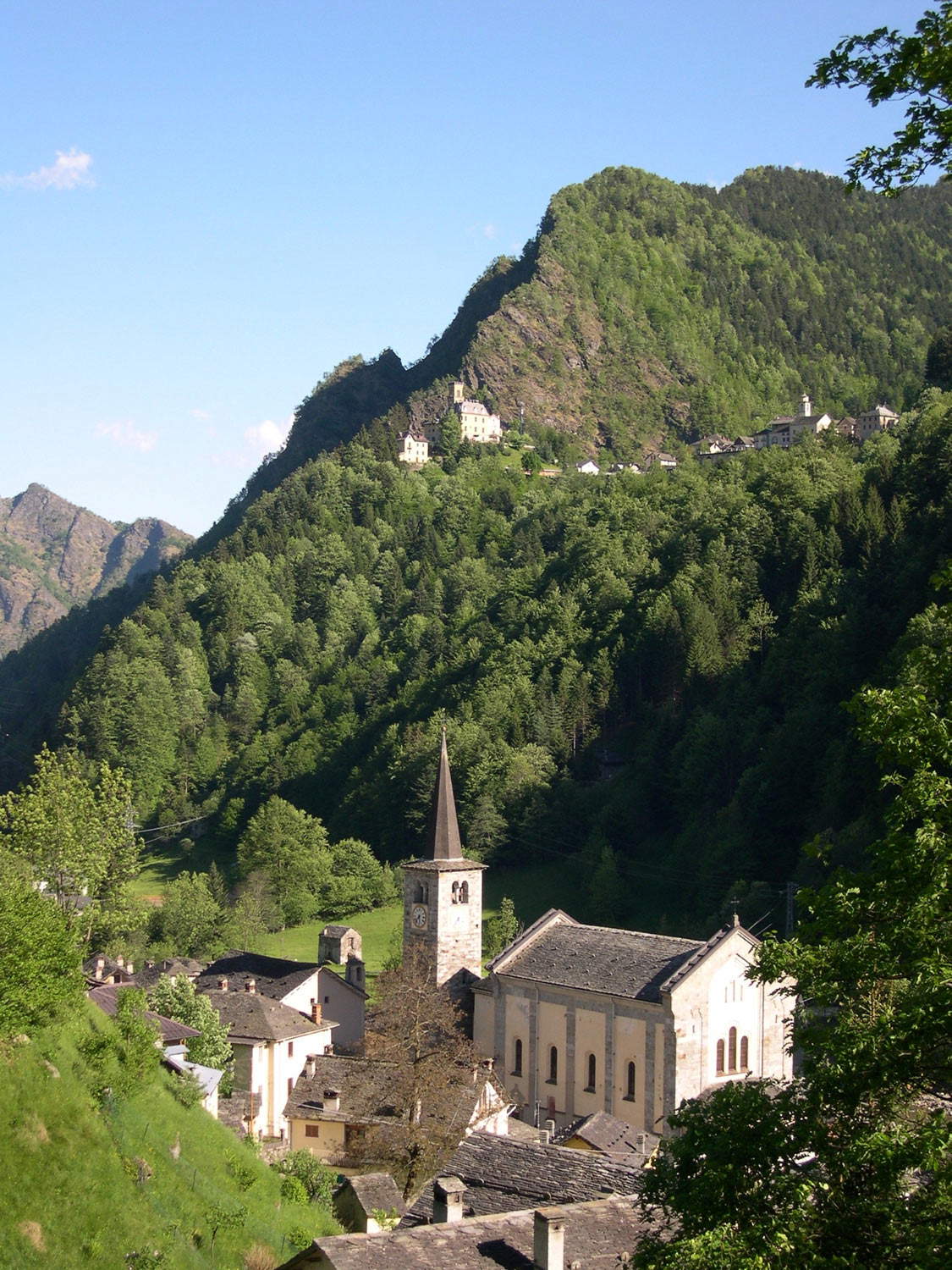
1. The parish church of San Giacomo Maggiore in Fobello.
Originally built by about 1545, over the centuries the Parish Church of San Giacomo Maggiore underwent various destructions and reconstructions (at least four) due to the flooding of the Mastallone stream. Its present appearance dates from 1931, built using new techniques and reinforced concrete to prevent further accidents.
The church is considered a jewel of Alpine sacred art: it has a single-nave structure with pillars, arches and barrel vaults. Its interior houses splendid works such as the 16th-century triptych attributed to Giovanni Battista Scolari of Rimella that depicts the Madonna Enthroned with Child and Saints Rocco and Mark. Of the ancient building it preserves a 17th-century figured stained-glass window, two panels with Adoration of the Magi and Adoration of the Shepherds signed by a Giacobini of Fobello from 1777, and wooden furnishings. The body of the church is flanked by the tall bell tower that refers in style to the late Romanesque style typical of the Alpine region.
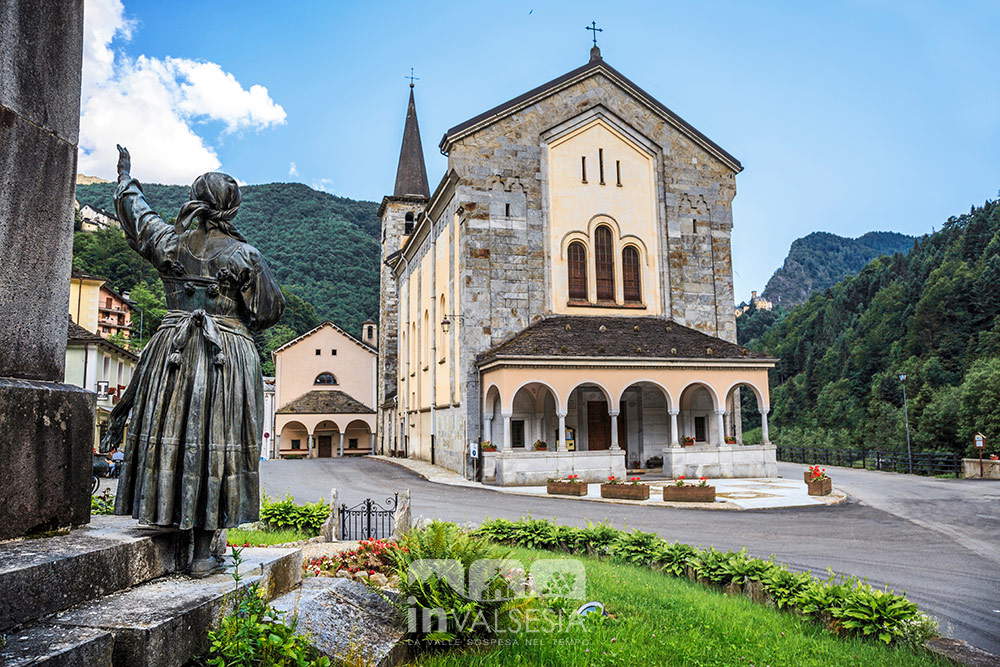
2. The villa-castle “The Castle” in Cervatto and the chapels of the Way of the Cross.
Among the stately villas in the village of Cervatto, the best known is Il Castello, a villa-castle that dominates the entire village from above. Commissioned in the late 19th century by the Montaldo family, in particular by Commendatore Giuseppe Montaldo, it is built with Teutonic features.
Near the castle, from the parish church of San Rocco, starts the series of chapels of the Way of the Cross, painted by Giovanni Battista Peracino of Cellio with his son Giovanni Battista in 1775: these lead up to the neo-Gothic oratory of San Giovanni. The thirteen chapels were built by the inhabitants of Cervatto with Sacro Monte of Varallo in mind.
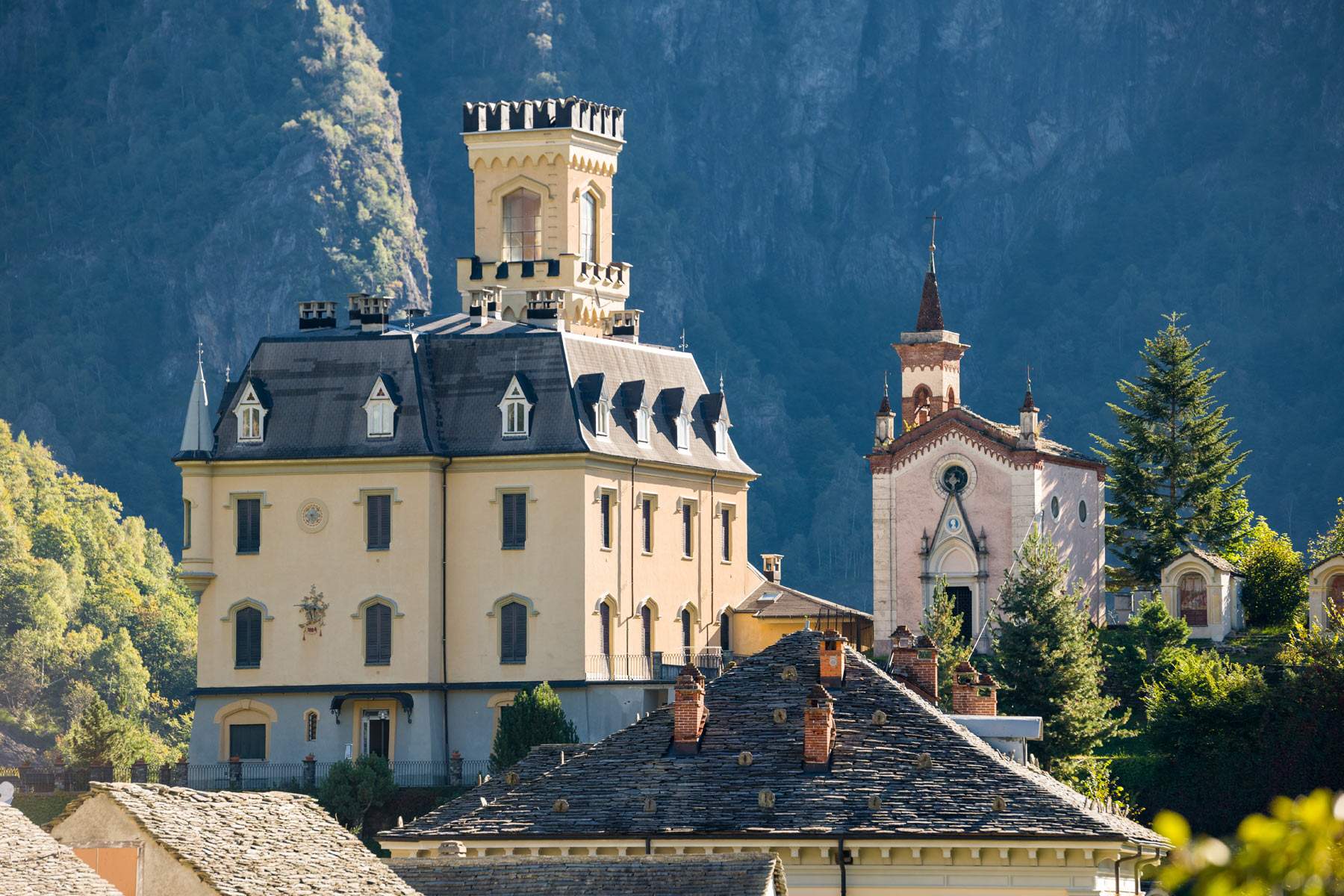 The
The3. The Villas of Fobello: Villa Musy, Villa Lancia, Villa Aprilia
There are stately villas in Fobello that testify to the fact that this village was a vacation destination for the Piedmont and Lombard elite in the last century. Examples are Villa Musy, Villa Lancia and Villa Aprilia. The former, which looks almost like a castle, was built in 1901 by Borgosese architect Costantino Gilodi for the family of Carlo Musy of Turin, jeweler to the House of Savoy. It was used by the family as a summer residence in Valsesia and is surrounded by a magnificent garden that is colored by different shades of vegetation in every season.
Fobello was the birthplace of Vincenzo Lancia, founder of the famous car manufacturer (in fact, it is possible to visit the permanent Vincenzo Lancia exhibition here, as we shall see). Villa Lancia was built in the locality of Montà by Vincenzo’s father, Giuseppe Lancia, in an area where there were three houses: he decided to have the largest one renovated and moved there. Later, in 1920, his son had the adjacent buildings demolished, bought the surrounding land and had his father’s house enlarged. On the outside it was surrounded by terraces, garages, a tennis cape and a bocce court, while on the inside it was enriched with all amenities and furnished with taste and elegance. Today it is no longer inhabited but is enhanced by the heirs and the Valsesia Lancia Story Club.
Of the Villa Aprilia, however, the remains remain near Lake Baranca (one must reach Alpe Selle di Baranca). Built by 1908 by architect Costantino Gilodi, the villa was sold to the Lancia family, which named it Aprilia in homage to the highly successful Lancia car. During World War II it was destroyed as it was used by partisans to hide weapons there. However, the wash house, some decorations, the panoramic portico, the fountain and part of the load-bearing masonry remain.
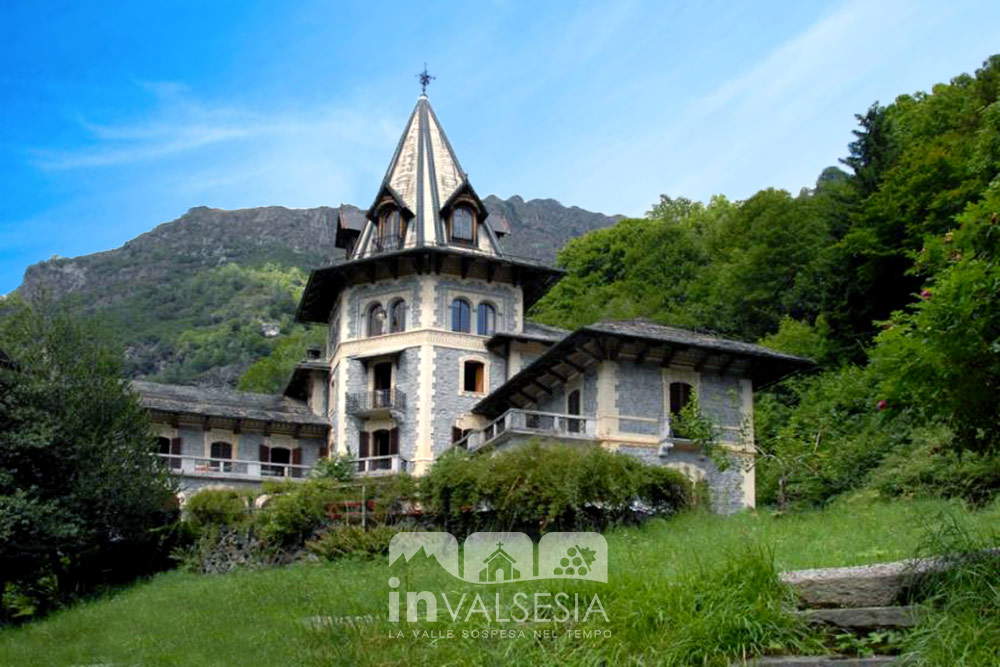
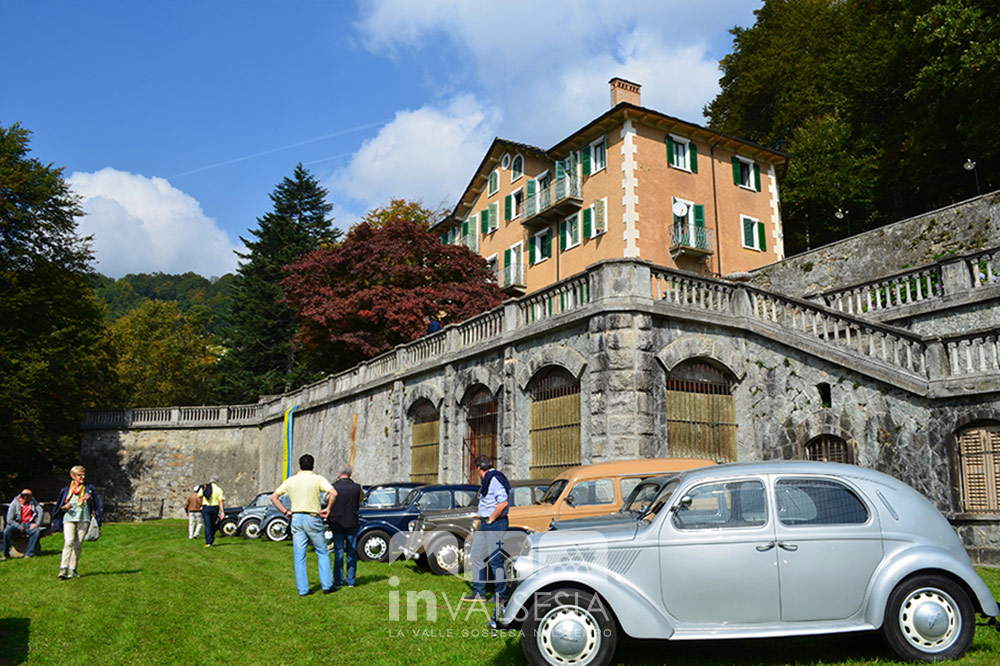
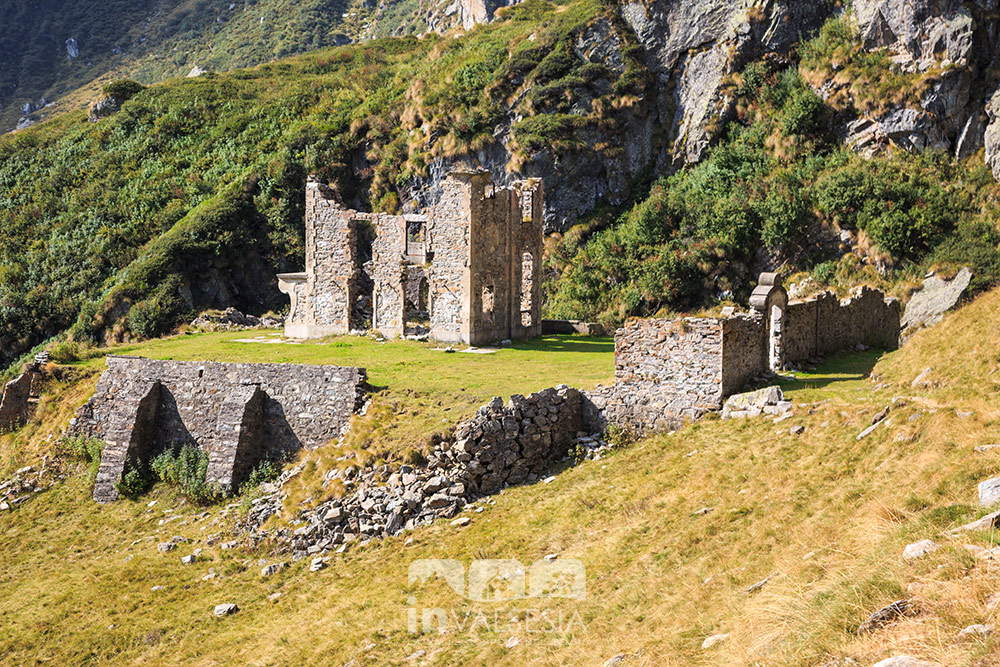
4. The Puncetto Museum and the Vincenzo Lancia permanent exhibition.
In Fobello, in a period house, the Puncetto Museum can be visited. This is a thousand-year-old lace that is made only in Valsesia (according to tradition it seems to have come here with the Saracen invasion in the 10th century). The name puncetto derives from"small stitch," and in fact the lace is formed by many small slip knots overlapping and alternating to create, through a play of solids and voids, a lace characterized by geometric patterns. Formerly used only in traditional costume, it has recently begun to embellish clothing, linens and home furnishings.
As mentioned earlier, Fobello is home to the permanent Vincenzo Lancia exhibition, dedicated to the founder of the car manufacturer of the same name. This runs along the second floor of the Giuseppe Lancia building that Vincenzo himself had built as a school building and is divided into four rooms named after famous Lancias: Augusta, Artena, Astura and Aprilia. Documents, photographs, newspapers and objects chronicle the life of Vincenzo Lancia and the car manufacturer.
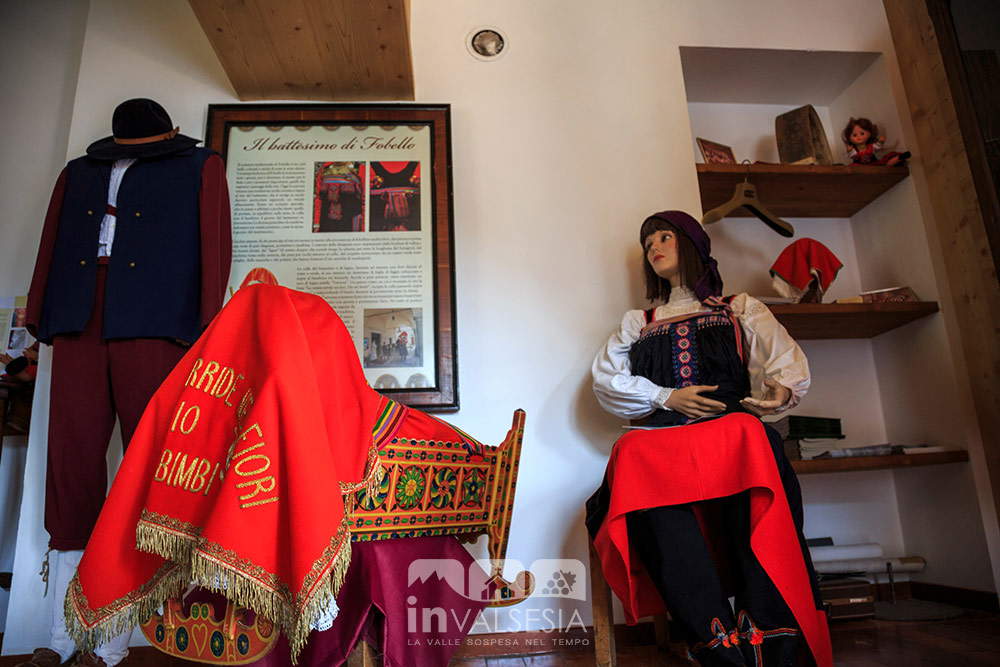
5. Church of San Michele Arcangelo in Rimella
Located among the houses in the center of Rimella, the church of San Michele Arcangelo dates, in its present form, to the 18th century and is considered one of the most important buildings of the 18th-century art in Valsesia. The interior has a single nave with an ovoid structure with side chapels, rich in decorations and wooden furnishings. There was one of the oldest pyramidal altars in Valsesia, consisting of fourteen carved, gilded and painted wooden statues accompanied by bas-reliefs, now in the chancel and on the walls. The altar was dismembered between 1780 and 1782 during the work that led the church to its present form.
Also worth mentioning is the baptistery, whose caisson was accomplished with great refinement by making carved and gilded panels on a blue background depicting the story of John the Baptist. Also housed are 18th-century canvases, such as the Victory of St. Michael over Lucifer accomplished by Giuseppe Mazzola of Valduggia, theApparition of St. Michael to the Gargano by Michele Cusa , and anAscension by Francesco Cusa. The chapel of St. Mona Lisa, on the other hand, was frescoed by Lorenzo Peracino of Cellio. The organ dates from 1862 and has as many as 1,400 pipes in the somiere.
In the sixteenth century a particular rite was practiced here: children who died without baptism were placed above the altar of Our Lady waiting for “uttreviviscant et baptizentur,” that is, they waited a few days to see if they came back to life and then baptized.
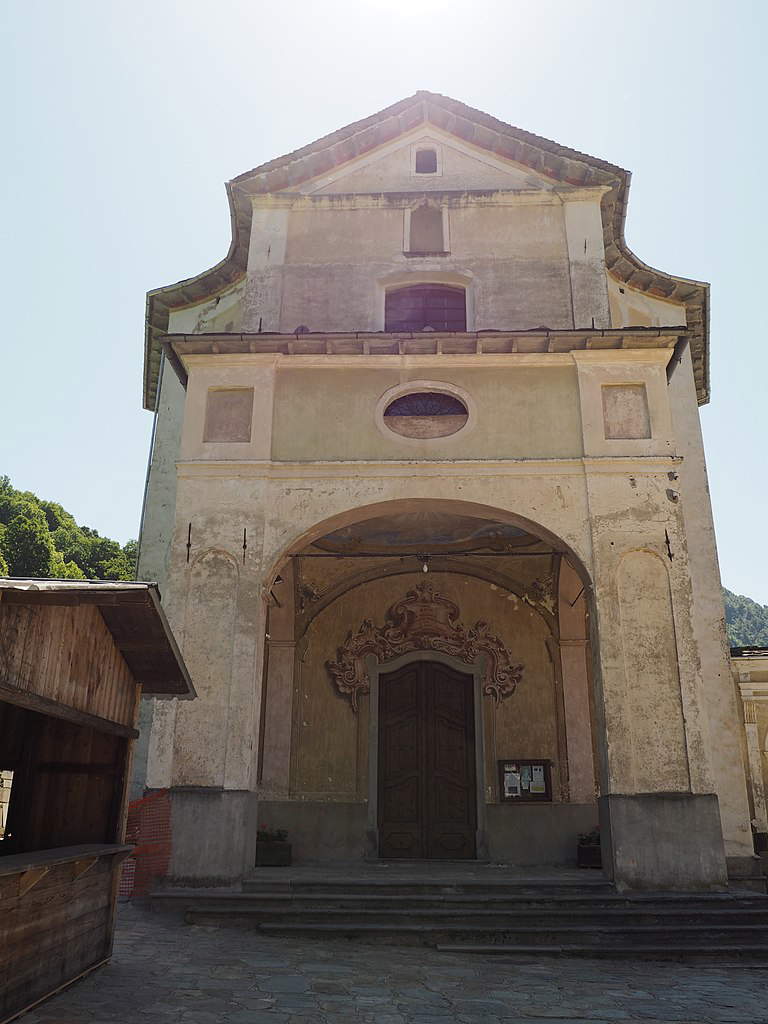
6. The Parish Church of St. Mary of the Assumption and St. Stephen in Cravagliana.
According to studies, the church in Cravagliana already existed between the 13th and 14th centuries; in particular, the bell tower testifies to a late medieval style. Dedicated to St. Mary of the Assumption and St. Stephen, the parish church features a large frescoed St. Christopher to the right of the main door: the work was completed by Giacomo Filippo Monti of Orta in 1635. Inside are 17th-century carved, gilded and painted wooden altarpieces : the one on the left is dedicated to Our Lady of the Rosary (1648), and the one on the right to Our Lady of Mount Carmel (1656); both show tile decorations, figures of saints, column-bearing angels, and floral decorations. The author is an unknown sculptor but they are considered two of the richest and most valuable altarpieces of the period in the whole area. Also preserved is a sixteenth-century canvas in the Gaudenzian style depicting the enthroned Virgin and Child among praying worshippers, a holy bishop, angels, St. Anthony of Padua holding a model of the church in his hand, and St. Peter Martyr. Finally, the fourteen paintings of the Stations of the Cross are the work of Cellio Lorenzo Peracino.
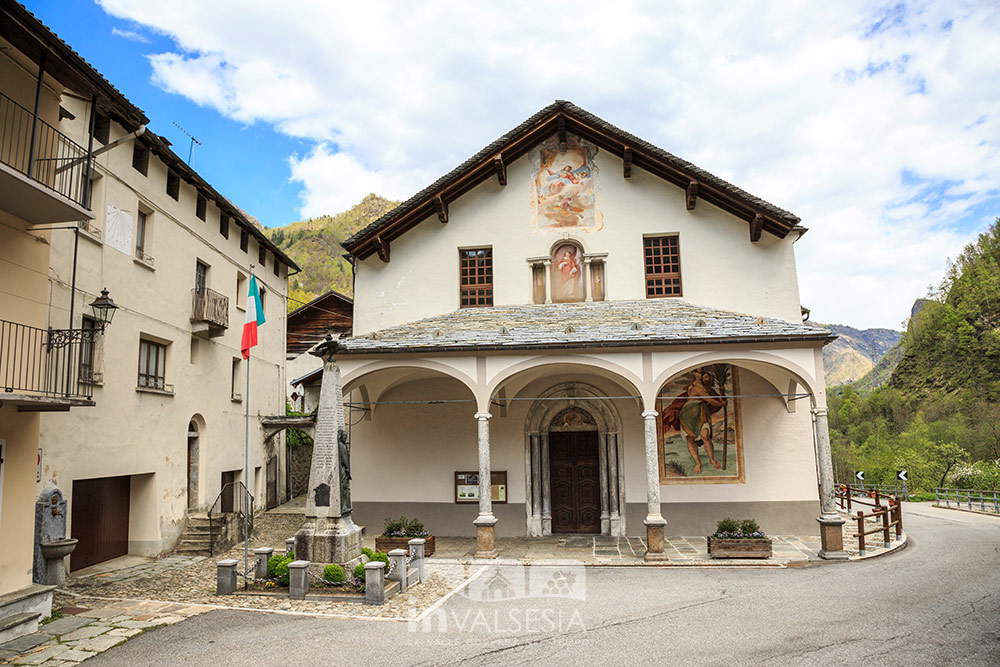
 |
| Discovering the Mastallone Valley: what to see among art and culture |
Warning: the translation into English of the original Italian article was created using automatic tools. We undertake to review all articles, but we do not guarantee the total absence of inaccuracies in the translation due to the program. You can find the original by clicking on the ITA button. If you find any mistake,please contact us.



























